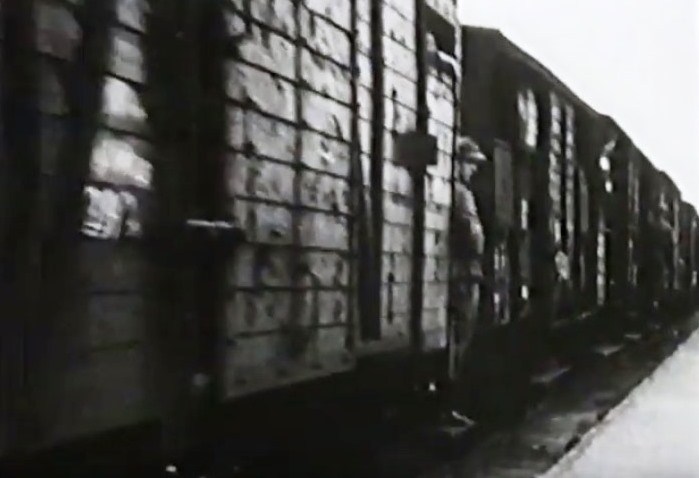Three young men from Brussels who set out in 1943 to rescue a train of deportees headed for Auschwitz – and succeeded spectacularly, are to be honoured with a statue, the Brussels parliament has decided.
The Twentieth Convoy, also known as Transport XX, left the Dossin Barracks transit camp in Mechelen – now the Holocaust Museum – on 19 April 1943 carrying 1,631 Jewish men, women and children destined for Auschwitz.
Along the way, the train was stopped by three young men armed with only a pistol and a home-made warning lantern between Boortmeerbeek and neighbouring Haacht in Flemish Brabant.
They managed to open one wagon and free 17 of the prisoners. As the train continued slowly forward, other prisoners were able to free themselves.
In all, 233 people got off the train; 89 were recaptured and 26 were killed, but 118 managed to remain free.
“It is absolutely right that they get a monument, but it is much too late,” said historian Mark De Geest, who devoted a book to the XXth Transport to Auschwitz.
The three were Robert Maistreau, then 22 years old, Youra Livchitz (25) and Jean Franklemon (also 25). Youra was of Jewish descent; Robert had a Jewish half-brother and a desire to be involved in the Resistance; and Jean was a communist who had fought with the International Brigades in the Spanish Civil War.
The plan had originally come from a member of the Resistance, who had tried to convince his commanders, without success.
“They turned it down because it was too dangerous, because they didn't have the manpower for it and because it would happen in an area where many Belgian young men were already hiding to escape compulsory labour. It was feared that the Germans would comb the area after the raid.”
The three decided to go ahead, meeting one evening at Place Meiser in Brussels, and travelling by bicycle to Boortmeerbeek (where the Haacht brewery is situated only metres from the Haacht railway line).
And despite the misgivings of the Resistance, and the paucity of equipment and resources, the three pulled it off, and 118 people survived.
However the fate of the three heroes was different. Youra was sentenced to death by the Nazis and executed on the national firing squad ground, where the VRT now stands. Robert continued with the Resistance and later ended up in a concentration camp, but survived, later living as a planter in Congo. He died in 2008.
Jean, the dedicated Communist, moved to East Germany, where he became a musician in an orchestra, where he died in 1977.
The exact plan for the memorial is not yet known, but it is likely to be in Brussels, since the three were Brussels natives, and the place where the liberation took place is on Flanders territory.

